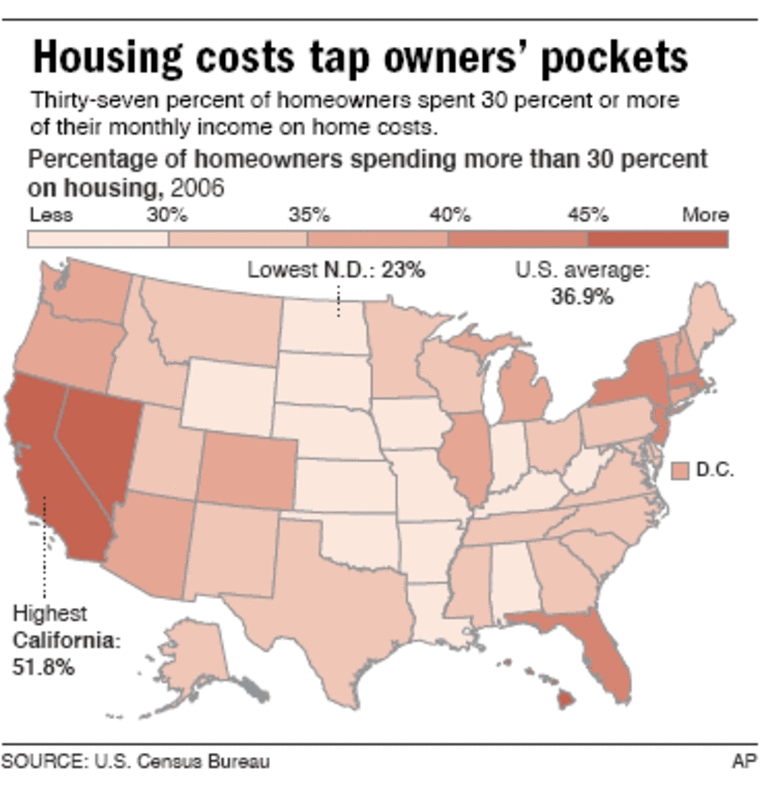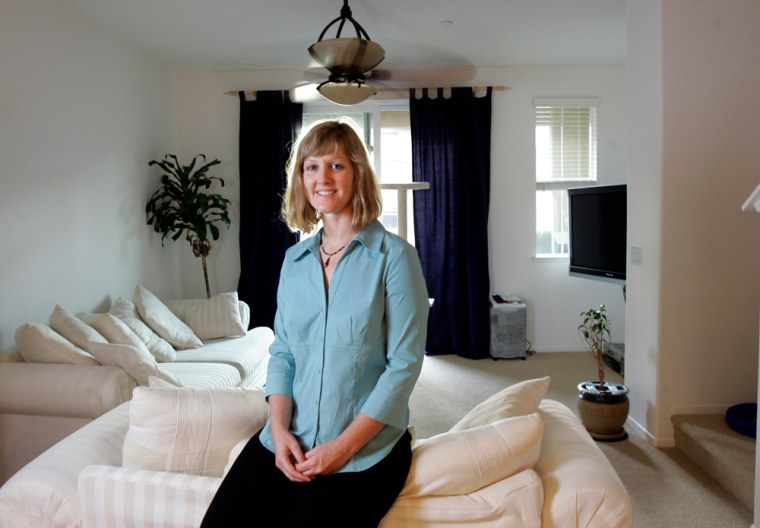Shawn Talbot and Gerry Woodruff were hoping to stay in their new condominium for about three years before trading up to a single family home in suburban San Diego.
They paid $431,000 for the three-story condo in 2005 — a hefty price in most markets. But with home values soaring in Southern California, they figured it wouldn’t take long to build enough equity for a down payment in one of the most expensive housing markets in the nation.
Then housing prices started to tumble, and the dream was in jeopardy.
“I’m not sure we will ever be able to afford a single family home in San Diego,” said Talbot, who works for a trade association.
Much of the nation is now in a housing slump, and an Associated Press analysis of new census data provides insight into the reason why: Since 1990, homeowners have faced a growing gap between their incomes and the price of their homes.
The widening gap in all but a few of the nation’s 500 largest cities helped make the recent boom in housing prices unsustainable, analysts say. The rising prices were fueled largely by low interest rates and risky borrowing rather than increasing incomes.
“We had an artificial economy,” said Brad Geisen, founder of Foreclosure.com, a Web site that lists foreclosure properties. “There was all this wealth created in real estate, and it wasn’t really created.”
Nationally, the median household income grew by about 60 percent from 1990 to 2006, roughly matching inflation. At the same time, the median home value — the point at which half were more and half were less — more than doubled, to $185,200.
The gap between incomes and home values was even bigger in many cities.
For example, incomes in Miami roughly kept pace with inflation — meaning they were effectively stagnant — while the median home value quadrupled, to $315,900. In places such as Bend, Ore., and North Las Vegas, Nev., incomes about doubled, but home values increased fivefold.
Mark Zandi, chief economist at Moody’s Economy.com, likened the current housing market to the dot-com boom and bust a few years ago, when stock prices for many high tech companies soared — before some of them ever turned a profit — and then crashed.
“The parallels are quite similar,” Zandi said.
The Census Bureau on Wednesday released 2006 housing data for every state, county, metro area and city with a population of at least 65,000. Income data were released last month.
Together, the figures provide a snapshot of the nation’s economy just as housing prices were peaking in many areas. Since then, housing prices have started to tumble in many markets, fueled by a crisis in the subprime loan market and dwindling credit even for some wealthier borrowers.
The AP compared the 2006 figures with data from the 1990 Census for the 499 cities that were included in both reports, providing an analysis of long-term trends that helped create today’s housing slump.
The analysis showed that homeowners in nearly every city are spending significantly bigger shares of their incomes on housing costs. From 1990 to 2006, the share spent on housing costs increased in all but 13 of the cities examined. Nationally, the share increased from 21 percent to nearly 25 percent for homeowners with a mortgage.
Many of the cities with large increases in home values were fast-growing cities or places with thriving economies. However, there were also large disparities in incomes and home values in some distressed cities, mainly because incomes effectively dropped.
For example, incomes in Detroit did not keep pace with inflation from 1990 to 2006, but home values more than tripled, to $91,700. Incomes also fell short of inflation in Cleveland, while the median home value more than doubled, to $90,400.
Home ownership rates are among historic highs, at 67.3 percent nationally. And booming home values have increased wealth for many families, allowing them to use the equity in their homes to take out second and third mortgages to finance home improvements, pay for college or buy automobiles and other amenities.
But many others who bought at the height of the market will have a harder time realizing their financial dreams.
“Houses out here are almost like a 401k,” said Talbot, the first-time home buyer from suburban San Diego. “It grows and grows until you get older and you need it.
“But a year or so ago, all that changed,” she said.

